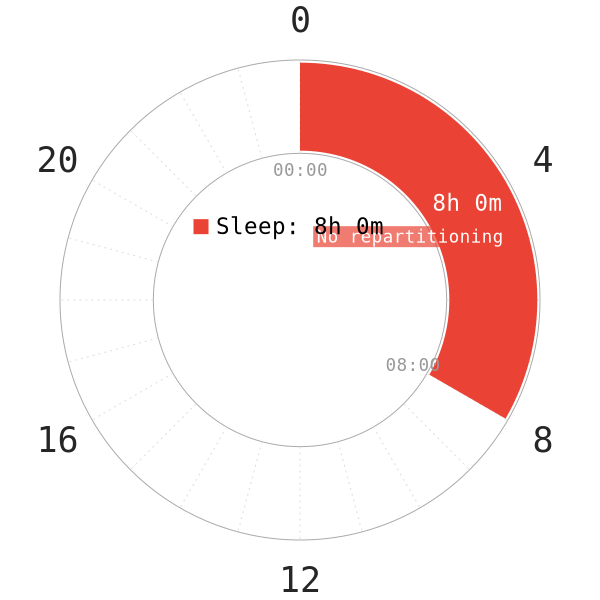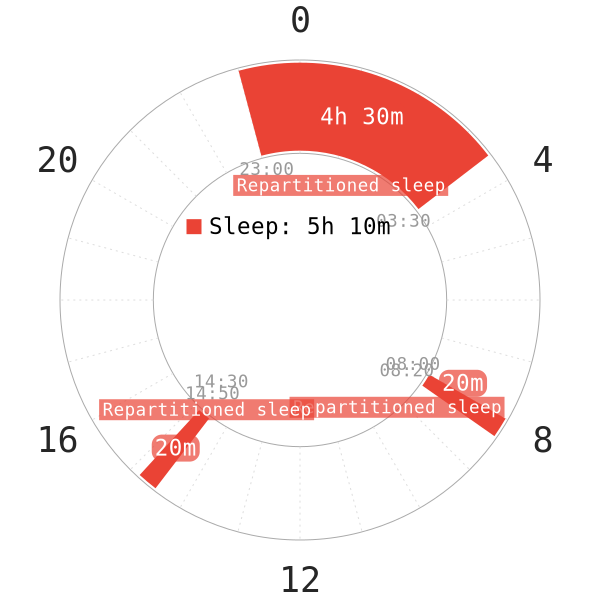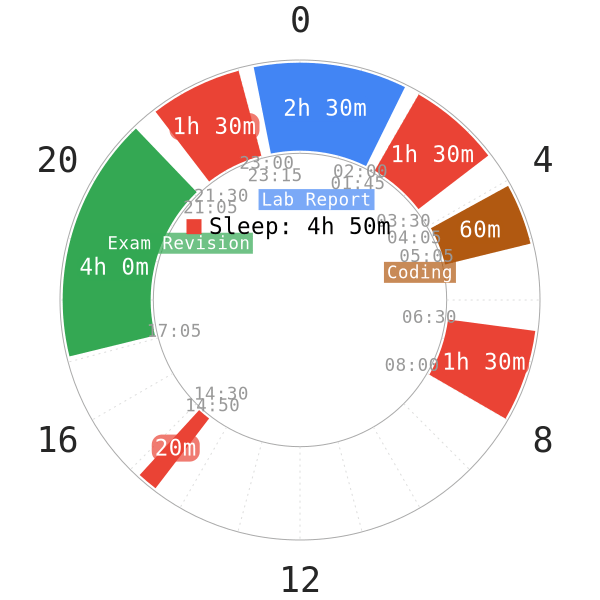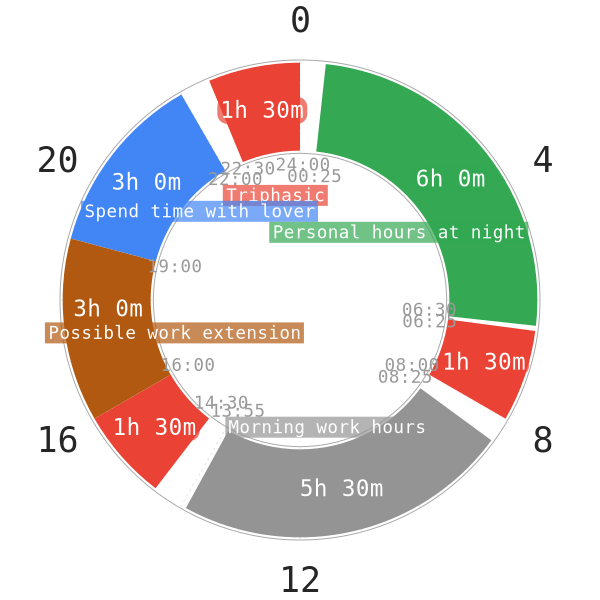Disclaimer
All information in this blog post serves to demonstrate how polyphasic sleeping has to do with the Pareto principle. The correlation is with regards to its overall sleep mechanics. This helps shed light on how polyphasic sleepers can make use of the Pareto principle to achieve more with less work.
Thus, the comparisons are not 100% clear. Since there is no research between the Pareto principle and polyphasic sleep, it is only possible to draw indirect correlations between these two subjects.
Introduction
Vilfredo Damaso Pareto was a well-respected Frenchman of Italian heritage. In addition, he had an illustrious academic career in Engineering, Economics, Management, Sociology and Moral Philosophy combined1. Later, he created the widely applied “80-20” principle in various fields (e.g, economics, wealth distribution, equality and even in nature)1,2. This principle originally suggested that “20% of Europe’s population now owned 80% of its wealth”2.
There are many different derivations and interpretations of this inequality in outcome. The Pareto principle is the approximation that 20% of the causes often result in 80% of the effects.
This blog will attempt to explain the following:
- Polyphasic sleep’s overall mechanics with the Pareto principle
- How polyphasic sleepers can learn to improve their productivity by applying this principle in their daily and long-term objectives.
However, more research about polyphasic sleeping’s mechanisms is necessary to fully determine if it is a healthy and long-lasting example of the Pareto principle.
Content
Real-world Application of the Pareto Principle
The Pareto principle sees widespread application in the physical world. The most common examples are:
- 20% of staff contribute to 80% sales
- There are 20% patients that use 80% hospital resources
- 80% profits are a result of 20% items1,3,4
- 20% of tasks yield 80% results2.
These examples stress on the importance of some of the most valuable assets. In a workplace setting, there are always top-notch workers that contribute to the majority of profit; roughly speaking, patients in critical conditions will require a lot more resources to save their lives than patients with only mild conditions. Likewise, on a large scale, most of the activities humans choose to partake in are not important. Only a small percentage of them actually matters.
However, the Pareto principle does not always reflect the 80-20 premise; at times, it even contains unresolved dilemmas. One paper demonstrated that the Pareto principle can clash with freedom, individual rights, autonomy and cultural values. This is if preferential satisfaction (e.g, welfare, privileges that benefit certain individuals in society) is a stronger priority5. It is also important that the Pareto principle’s principles should not compromise the efficiency and stability of decision making principles5.
Applications in Polyphasic Sleeping
Some aspects of polyphasic sleeping bear certain resemblance to the Pareto principle, although only to some extent. This section will put forth some comparisons between the two to demonstrate how polyphasic sleeping has some relationship with the Pareto principle.
Sleep efficiency – less is more
There are 2 systems of polyphasic sleeping. One reduces total sleep time in bed and the other focuses on personal productivity without reducing total sleep time daily.
Reducing Schedules


At first, a polyphasic schedule (e.g, E2) that gives only ~5h of sleep each day can pose serious viability questions. However, the mechanics of repartitioning is what makes polyphasic sleeping a viable lifestyle option at least short-term. The primary source of motivation behind this category of schedules is to gain some more waking hours for those who wish to spend those hours on their desired activities.
- Repartitioning allows the sleepers to retain vital sleep stages (REM and SWS) while sacrificing NREM1 and some NREM2. Both of these stages are a lot less significant. Thus, by spending less time in bed, polyphasic sleepers can now focus on the more important sleep stages.
- Put another way, NREM2 mostly contributes to the total sleep in humans each night (about ~50% of monophasic TST is spent in NREM2 on average). However, on adapted polyphasic sleep, much less sleep is necessary to maintain well-being.
- The consistency in scheduling of polyphasic sleeping enables repartitioning to finish as long as there is little or no oversleeping in the process.
- A lot of adapted sleepers now thrive with only 5-6h of sleep (in some cases even lower). Most remarkably, they also report better sleep quality and even personal productivity than on their monophasic schedule.
- The SWS and REM peak hours are also one of the ideal ways to make use of timings of sleep to get the most vital sleep stages. With sleep hygiene (e.g, dark period, cooling down before sleep, a proper diet and meal time), sleep reduction is possible to different degrees.
NOTE
Repartitioning and the preservation of vital sleep stages may not apply to every polyphasic sleeper, even after the adaptation phase. This depends on a lot of individual factors. Some examples include sleep compressibility, sleep genes, stress, current medication use, sleep hygiene practice.
Non-reducing Schedules
There is usually less incentive to choose schedules in this category. Rather than reducing total sleep time, they aim for consistency of bedtimes and a better distribution of sleep stages.
- The most common non-reducing schedule is non-reduced Biphasic sleep. The daytime nap serves to improve mental clarity, learning and recalling of materials. It also provides overall an energy boost for the remainder of the day.
- Flexible extended siesta schedules in countries like Italy also fall in this category.
- Some wake time is for napping with hours of productivity upon awakening; this also appears to be the primary premise of this category of schedules.
- Those who are naturally biphasic or have a tendency for daytime napping can place a nap during these hours while no important event is in the way.
In addition, individuals who often cannot afford to sleep a full monophasic duration at night may find adding a daytime nap beneficial without reducing total sleep. The nap acts as means to relieve homeostatic pressure from the shortened nocturnal core sleep. However, the Pareto principle does not specifically apply to this sleep category.
- There is no reduction of NREM2 or any other sleep stages. The efficiency of sleep stage distribution resembles that of monophasic sleep.
- Light sleep still accounts for a huge portion of total sleep time. Additionally, vital sleep stages only account for ~30-40% of total sleep.
Prioritization of activities on a polyphasic lifestyle

Problem 1
This is an illustrative example on how an adapted TC1 sleeper is preparing to sort out their priorities in the upcoming 3 days.
- The final decision is that Exam Revision is the most important activity that requires a lot of focus.
- The Coding activity is less important than exam revision.
- Lastly, the Lab Report is the least important. However, it presumably takes as much time as Exam Revision.
The next question is whether this sleeper should sacrifice some sleep on his adapted schedule to finish all these activities. Another query is whether he can achieve all these with the maximum possible efficiency.
Resolution
Depending on personal goals, there are a lot of ways to approach this common prioritization problem.
- If the TC1 sleeper only aims to pass the Lab Report assignment with a score of 80-90/100, then pouring in roughly 20% effort is theoretically enough to achieve that score.
- The learning method with only 20% effort is possible with mnemonics to ease information processing. Alternatively, he can use any other personally preferred method that does not take a long time.
- This strategy will open up more time for the Exam Revision task that demands special attention.
- Depending on skills, possibly a bit of luck and grading policies, the final grade for the lab report may be higher or lower than expected.
- The coding activity may also take longer than usual.
The key point of applying the Pareto principle is to allocate more resources and time for very important tasks. At the same time, it is also necessary to apply a reasonable amount of effort to achieve the desired goals for lesser tasks

Example 2
This situation details a Triphasic sleeper. He wants to keep both his career responsibilities and a good relationship with his monophasic lover who loves sleep. She supports his polyphasic sleep regime; however, she only demands that he spend time with her at certain hours that work best for him in the day. This dilemma is something rather common in the community that polyphasic sleepers very often have to face.
Living side by side with a monophasic sleeper and especially those who do not support polyphasic lifestyle is a tough challenge to crack. Oftentimes, either one will have to compromise their adaptation (transition to a simpler sleep pattern like Biphasic) or the relationship collapses. Not to mention the prospect of losing the job from the SWS crashes during adaptation. Triphasic as a schedule is rather intense in nature; thus, there is no easy adaptation in this situation. The adapter now faces several outcomes that he needs to consider:
- Adapt to Triphasic and maintain every other quality of life aspects (job and lover)
- Failure to adapt to Triphasic, risk losing the job but can still maintain the romantic relationship
- Work hours extension (Brown in the napchart) may clash with time spent for lover
- Lose everything
Resolution
A clearly defined set of goals and priorities is absolutely necessary for real-world situations like this.
- If social obligations (including both sustaining the relationship and the career) have higher priority, then the Triphasic schedule becomes much less important. The extra hours it provides may not be necessary at all.
- Staying awake during graveyard hours does not improve the relationship. This is because the girlfriend is a monophasic sleeper who sleeps at those hours.
- In addition, the customer assistance activity may take longer than usual and violate the relationship time.
- The Triphasic schedule is likely to be relegated. This would save more evening hours for commitment with the girlfriend.
- Adapting to an easier schedule in terms of structure also lowers the chance of oversleeping and losing the job. It also limits the intensity of mood swings as a result of intense sleep deprivation. This can have debilitating effects on all types of relationship.
Further notes
If romance is the most important thing to the sleeper, then he needs to make sure that nothing else can get in the way of those most important hours. The Pareto principle states that “no demand of lesser importance ever usurps a time slot already reserved for a task of higher importance and greater risk”2.
This recommendation is also in line with the Eisenhower Matrix. The ultimate approach is also to prioritize the most important task, whatever it may be1. In this scenario, planning to secure these hours is one of the most important tasks that yield 80% of the results. Such outcomes would include:
- Stable and happy relationship
- Fulfilling career life and overall well-being
These long-term effects are definitely worth considering. In addition, working less hours to accommodate for this most important objective is likely necessary.
Conclusion
In sum, the Pareto principle is widely applicable in the real world. It also sheds light on how the majority of decision making and prioritization is key to a content life. The most remarkable strategy to make use of the Pareto principle is through defining the most important personal goals and outlining a detailed plan to achieve them.
Similarly, the nature of polyphasic sleeping is also partially to “sleep less but focus on most vital sleep stages”. By focusing on the highly significant tasks while spending much less time on the trivial activities, polyphasic sleepers can learn to manage their time better. They also have to decide their most important objectives to work toward without having to make undue sacrifices. As a result, the Pareto principle is an interesting decision-making puzzle that can maintain productivity and well-being if done right.
Main author: GeneralNguyen
Page last updated: 2 April 2021
Reference
- Kumar, Prabhat. “Pareto Principle: the 80-20 phenomenon.” (2015).
- Mackenzie, Alec, and Pat Nickerson. The time trap: The classic book on time management. Amacom, 2009.
- Mancini, Marc. Time management. The McGraw-Hill Companies, 2003.
- Ivančić, Valentina. “Improving the decision making process trought the pareto principle application.” Ekonomska misao i praksa 2 (2014): 633-656.r
- Farber, Daniel A. “The Problematics of the Pareto Principle.” bepress Legal Series (2005): 698.
